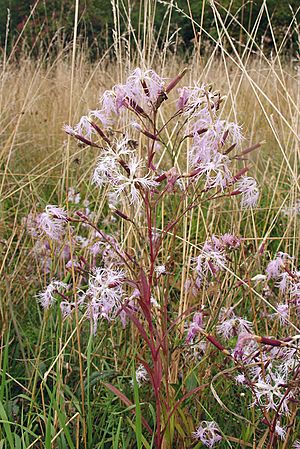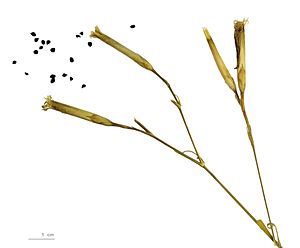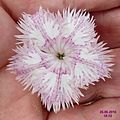Large Pink facts for kids
Quick facts for kids Large Pink |
|
|---|---|
 |
|
| Scientific classification | |
| Kingdom: | |
| (unranked): | |
| (unranked): | |
| (unranked): | |
| Order: | |
| Family: | |
| Genus: | |
| Species: |
D. superbus
|
| Binomial name | |
| Dianthus superbus |
|
Dianthus superbus, often called the Large Pink, is a lovely wild flower. It belongs to the Dianthus family, which includes many types of "pinks" and carnations. This plant grows naturally across parts of Europe and northern Asia. It is a herbaceous perennial plant, meaning it has soft stems and lives for more than two years.
Contents
What is the Large Pink?
The Large Pink is a type of flowering plant. Its scientific name is Dianthus superbus. The word "superbus" means "superb" or "magnificent" in Latin. This name fits well because of its beautiful, often fringed flowers. As a herbaceous plant, it does not have woody stems like a tree or shrub. Instead, its stems are soft and green. Being a perennial means it comes back to life each spring after winter.
Where does the Large Pink grow?
This amazing wild flower can be found in many different places. In Western Europe, it grows from northern Spain all the way up to Norway. It also thrives across northern Asia. You can find it in countries like China and Japan. The Large Pink often grows in meadows, open woodlands, and along riverbanks. It prefers sunny spots with well-drained soil.
What does the Large Pink look like?
The Large Pink is known for its striking flowers. Each flower has five petals. These petals are often deeply cut or fringed, giving them a delicate, lacy look. The flowers usually come in shades of pink, purple, or white. They often have a sweet, spicy scent. The plant can grow up to 80 centimeters (about 31 inches) tall. Its leaves are long, narrow, and a grayish-green color.
Life Cycle and Reproduction
The Large Pink is a flowering plant that reproduces using seeds. In spring, new shoots grow from the plant's roots. Flowers typically bloom in summer. These colorful flowers attract pollinators like bees and butterflies. The pollinators help the plant make seeds. After the seeds ripen, they fall to the ground. If conditions are right, these seeds will grow into new plants. This cycle allows the Large Pink to spread and thrive in its natural habitats.
Images for kids
See also
 In Spanish: Clavelito común para niños
In Spanish: Clavelito común para niños



